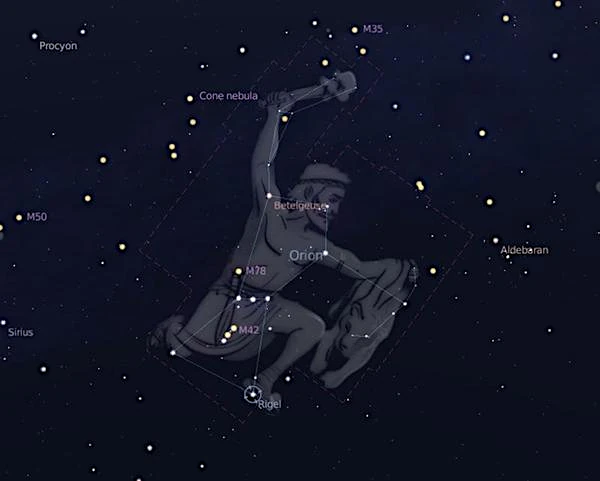
Since time immemorial, humans have looked up at the stars to project gods, beasts, and founding stories. The first known constellations date back to ancient Mesopotamia, around 3000 BCE. The Babylonians codified about thirty celestial figures, some of which, like the Bull or the Scorpion, are still found today in the zodiac.
The Greeks, and then the Romans, inherited this celestial cartography, enriching the night sky with their own myths. Ptolemy, in his treatise Almagest (around 150 AD), established 48 northern and equatorial constellations. This corpus dominated the Western sky until the Renaissance.
With the great discoveries and the observation of the southern sky by European navigators such as Johannes Bayer (1572-1625) and Nicholas Louis de Lacaille (1713-1762), new constellations appeared between the 16th and 18th centuries. These additions filled the gaps in the southern sky, invisible from Europe.
It was not until 1922 that the International Astronomical Union (IAU), wishing to standardize astronomical nomenclature, decided to set the total number at 88 constellations. In 1930, the Belgian astronomer Eugène Joseph Delporte (1882-1955) defined the precise boundaries of each constellation, according to the equatorial projection on the celestial sphere. These boundaries are arbitrary but respect the lines of declination and right ascension of the sky to avoid any overlap.
The 88 constellations thus cover the entire sky, with no blank areas or overlaps, facilitating the location of celestial objects and scientific communication.
This division has no fundamental basis from an astrophysical point of view. It is a human convention, inherited from a historical, geographical, and cultural construction. The stars of a constellation are not physically close in space: they form only an apparent pattern (a particular asterism), due to the terrestrial perspective.
Some non-Western cultures have their own constellations—sometimes completely different—such as the Chinese Xiu or the Aboriginal constellations of Australia. The universalization of the 88 constellations by the IAU thus reflects a desire for scientific standardization, but also a form of colonial heritage in celestial cartography.
To precisely locate a star in the sky, astronomers use a system of spherical coordinates called the celestial equatorial system. This system is analogous to terrestrial geographic coordinates (latitude and longitude), but transposed onto the celestial sphere.
The declination (δ) plays the role of latitude. It measures the angle of an object relative to the celestial equator, in the north-south plane. It is expressed in degrees, minutes, and seconds of arc, and ranges from +90° (north celestial pole) to –90° (south celestial pole). A star located on the celestial equator will have a declination of 0°.
The right ascension, abbreviated as R.A. or (α), the celestial equivalent of longitude, measures the east-west position of an object along the celestial equator, but in an angular unit based on time. It is expressed in hours, minutes, and seconds (1 h = 15°), and ranges from 0 h to 24 h.
The starting point of right ascension is the vernal point (or gamma point, ♈︎), which is the intersection between the celestial equator and the ecliptic at the time of the March equinox. Right ascension increases eastward from this point.
The coordinates (α, δ) are fixed for a celestial object (apart from precession or proper motion) and allow precise pointing of an instrument. They are fundamental in stellar catalogs and astronomical databases.
The adoption of the 88 constellations is the result of a long evolution, at the crossroads of myths and science. If this number may seem arbitrary, it reflects a practical desire: to offer a stable grid of the sky, universally shared, to facilitate the location of stars, the identification of galaxies, or the tracking of satellites.
Modern constellations are thus both technical landmarks and witnesses to a narrative and cultural past that humanity still projects onto the stars.